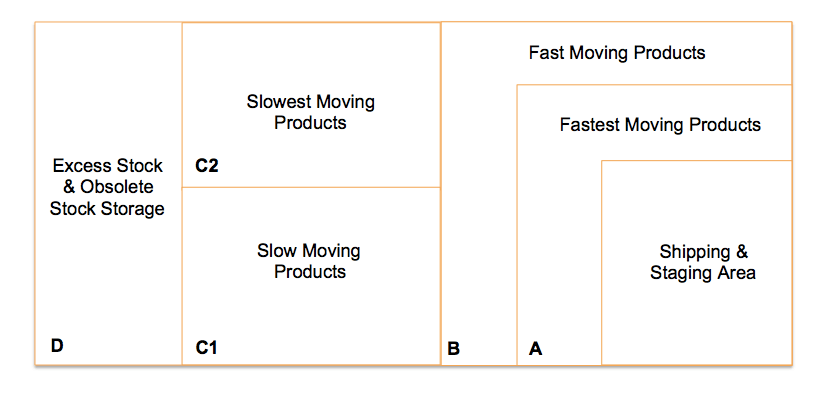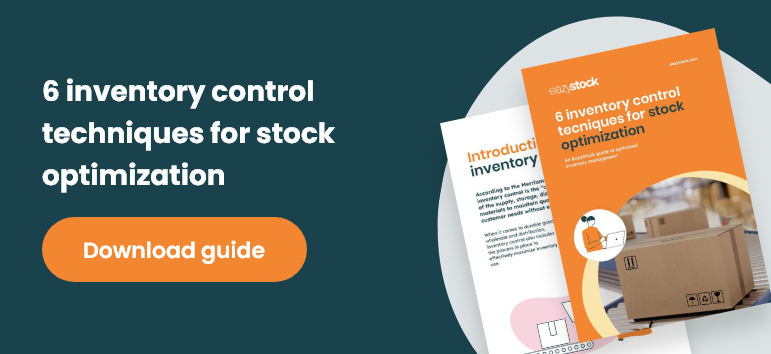Warehouse Productivity: 7 Ways to Improve Productivity
 This is a guest post contributed by Cory Levins at Air Sea Containers. Cory serves as the Director of Business Development for Air Sea Containers. He oversees the development and implementation of ASC’s internal and external marketing program, driving revenue and profits from the Miami FL headquarters.
This is a guest post contributed by Cory Levins at Air Sea Containers. Cory serves as the Director of Business Development for Air Sea Containers. He oversees the development and implementation of ASC’s internal and external marketing program, driving revenue and profits from the Miami FL headquarters.
Just because a sale is on the books doesn’t mean the story is over. For many businesses, it’s just getting started, and it won’t end until the customer has the product in hand. The road to that outcome leads through the warehouse.
Warehouses and distribution centers are where many of the fundamental exchanges of commerce take place. That’s why many companies spend millions or more optimizing every aspect of their warehouses to operate with fine-tuned efficiency. If your warehouses are a little sluggish, though, it doesn’t mean you have to tear them all down and start from scratch. You can begin your journey to optimization by considering some of the following tips.
Go mobile.
 If your warehouse employees are still tethered to a desktop monitor or printer, you’re paying a price in productivity. All those trips back and forth to a desktop station add up to a huge number of wasted steps, and the large daily pick volumes that many warehouses experience in our e-commerce focused marketplace means that every second really does count.
If your warehouse employees are still tethered to a desktop monitor or printer, you’re paying a price in productivity. All those trips back and forth to a desktop station add up to a huge number of wasted steps, and the large daily pick volumes that many warehouses experience in our e-commerce focused marketplace means that every second really does count.
Consider investing in mobile devices such as tablets for your warehouse. Your employees’ company phones can also offer excellent performance in pick assistance if you choose the right apps. Dozens of apps for warehouse and inventory management are now available online, and the variety out there means you can likely find one that suits the needs of your business.
Tidy up.
You don’t need to hire Marie Kondo as a consultant to experience the value of keeping a neat and orderly warehouse. To get a sense of what needs improvement, take a walk through your warehouse and notice where you have to stop to navigate through or around an obstacle. Every one of those obstacles likely costs your employees productivity as they pick.
Several common best practices of warehouse clean-up include:
- Making sure that used packaging is moved off the warehouse floor as soon as it’s no longer needed.
- Keeping equipment such as pallet jacks and forklifts out of aisles when not in use. Leaving these lying around is also a safety hazard.
- Creating a schedule for removing trash, used pallets, etc. Make it a regular priority and don’t wait until the problem is noticeable.
Organize for efficiency.
One of the best ways to reduce pick times is to employ an ABC classification system for inventory management. This system for efficient warehouse organization was first developed by General Electric in the 1950s and remains widely in use today. Many different firms have developed their own versions since then, but the key principles remain the same:
- Category A: this is the smallest category and consists of the most important stock items
- Category B: will generally be larger in terms of volume of SKUs and will usually be made up of products of less value
- Category C: this will typically be the largest category where products will contribute the least to your business’s bottom line
Once you have your items classified as A, B or C, don’t be afraid to invest a little time in reorganizing your bin system to make it more efficient. One advantage of this system is that once it’s in place, it probably won’t need frequent changes, unless your inventory changes often or is highly seasonal.

Package smart.
Optimizing packaging to more closely suit your needs can have obvious benefits in areas such as cost and customer satisfaction. However, you might not have thought of the considerable rewards it can offer in warehouse efficiency as well.
It can be as simple as choosing a stackable version of packaging that normally isn’t. For example, jerricans for dispensing fuel and chemicals are now widely available with molded plastic bottoms that make them easy to stack. And using overpack boxes can make it easier to organize items on pallets, as well as adding a layer of protection. The benefits of these changes can add up much more quickly than you might realize.
Consolidate and clean up your communications.
In our hyper-connected modern era, there are fewer excuses for communication breakdowns than ever. If at all possible, you should have as many communication channels as possible under a single system. For a warehouse to operate smoothly, interdepartmental communication should be as close to seamless as possible.
Slack is great for these applications, but it can also be full of unnecessary distraction and noise when used on its default settings; consider some Slack optimization tips to keep the app focused on workflow. Of course, part of the app’s appeal is its function as a digital water cooler, but when employees are spending more time at that water cooler than at work, you’re wasting resources.
Consider your KPIs.
It’s worth asking if your warehouse KPIs are telling the real story of how your warehouses are performing. Take a look at a list of common warehouse KPIs — are you missing any? And are those you’re tracking giving you useful information?
Even if your KPIs are telling a technically accurate story, remember that they won’t always tell you why. Inefficient receiving numbers might mean that your warehouse employees need some updated training, that your shipping and packaging materials could use some optimization or that your freight carrier isn’t meeting expectations. Make sure you’re looking at numbers that give you the whole picture, not just a narrow view of one aspect of performance.
Keep your ear to the ground.
Lastly — but perhaps most importantly — talk to the employees on the ground who are fulfilling orders and receiving shipments day in and day out. Ultimately, they’re the ones who will make or break your plans for warehouse efficiency.
 Make sure your employees feel comfortable giving you the honest truth about what’s working and what isn’t. An anonymous survey might even be best to ensure a minimum of sugarcoating and soft-pedaling. Whatever method you choose, remember: These workers are part of the backbone of your organization, and if the processes in place aren’t working for them, something needs to change.
Make sure your employees feel comfortable giving you the honest truth about what’s working and what isn’t. An anonymous survey might even be best to ensure a minimum of sugarcoating and soft-pedaling. Whatever method you choose, remember: These workers are part of the backbone of your organization, and if the processes in place aren’t working for them, something needs to change.
In many ways, your warehouses and distribution centers are where the theory of your organization meets the practice. Streamlining their operation can produce some growing pains and requires some capital investments, but most companies find the results to be well worth it.
About Air Sea Containers
Air Sea Containers Inc is a family owned operation specializing in safe transportation of dangerous goods worldwide for over 20 years. Always in compliance with current regulations, Air Sea Containers Inc is a pioneer of dangerous goods packaging and specializes not only in hazmat/dangerous goods packaging products and services, but also in customer care. Learn more about Air Sea Containers at www.airseacontainers.com or contact the company at (305) 599-9123.





